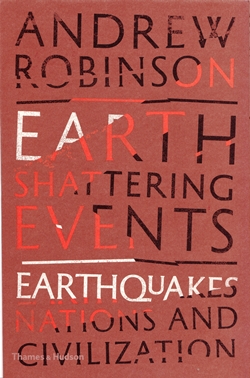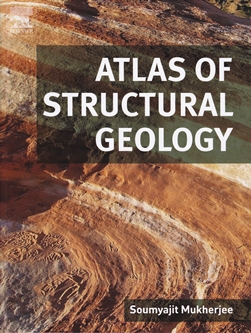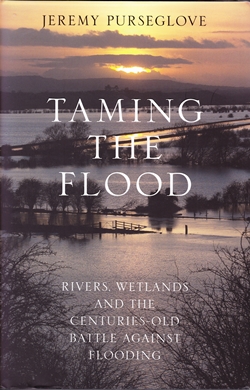 Earth Shattering Events
Earth Shattering Events
Not so long ago, geologists were reluctant to discuss asteroid impacts. They felt that appealing to extra-terrestrial agency was somehow – unscientific. It smacked of deus ex machina. It was just too easy - the sort of thing quacks and pseudoscientists like Velikovsky wrote about. Worse, it was straying into another chap’s discipline, which was simply not cricket.
We’re over that now. But as Andrew Robinson explains in his lively and readable synthesis, archaeologists still have a long way to go when it comes to explaining historical events in terms of GGEs – ‘Global Geophyscial Events’, like earthquakes and volcanic eruptions. Psychologically, he suggests, they are still where geologists were in AD 1979 – or if you like, ‘Year 1 BA’ (Before Alvarez). Archaeologists have yet to have their ‘iridium anomaly moment’ and until they do, they will go on preferring to talk in terms of climate changes, disease, invasion by mysterious ‘sea peoples’, crop failures, and other such admissibly gradualistic causes.
In this delightfully un-academic but thoughtfully structured book of 11 chapters plus conclusion, Robinson examines what people made of earthquakes before science, and what scientists made of them before seismology, before taking on some case histories, ancient and modern. He explores the crucial year 1750, when several quakes shook Britain and (just as meteorites, landing on professors in Siena instead of the usual peasants, in 1794, gave birth to meteoritics) caused great minds to consider anew the trembling of the Earth.
The Lisbon Earthquake of 1755 changed world history by putting an end to the Enlightenment’s Panglossian optimism, as is well known thanks to Voltaire. But much lesser-known conjunctions come into the picture, such as the Caracas earthquake of 1812 that helped give birth to Bolivia and changed the career of Simon Bolivar.
Naples was struck in 1857, from which Robinson dates the birth of seismology, while in 1906 San Francisco was the first modern city to be seismically destroyed. Robinson analyses the aftermath, and marvels, if that is the word, at the way in which the disaster was ‘spun’ by property boosters into one of destruction by fire, rather than the uninsurable Act of God.
As a similar fate befell Tokyo and Yokohama in 1923; while the Tangshan Earthquake of 1976 arguably put an end to old-style Maoist Communism in China. Gujarat (2001) played a crucial role in the rise from obscurity of current Indian Premier, Mr Narendra Modi, while the Indian Ocean Tsunami of 2004 showed the world what a GGE could really do. The consequences of the Fukushima Disaster, in which the real disaster was overshadowed by a much lesser event that nevertheless exposed the corruption and complacency of the Japanese nuclear industry (with potentially global consequences), bring this thought-provoking book to a worrying close.
Reviewed by Ted Nield
EARTH-SHATTERING EVENTS: EARTHQUAKES, NATIONS & CIVILIZATION by ANDREW ROBINSON. Thames & Hudson 2016. 256pp hbk ISBN 978-0-500-518595 List price: £18.95. W: www.thamesandhudson.com
 52 things you should know about palaeontology
52 things you should know about palaeontology
Many text books are so factual that they leave the author little room to apply a personal touch, and instead come across as dry and dusty. In contrast, the editors here have allowed the authors free rein in both their choice of subject matter and in how they present it. The result is a peach of a book that ricochets from one aspect of the science to another, in bite size articles that never lose the reader's interest.
I subdivided the articles into basic primers, practical ‘how-to’s’, discussion or review articles and stories. In addition there are some ‘hard science’ descriptions of evolutionary concepts, as well as gentler introductions to homeomorphy and quaternary sea level changes. The primers were more academic descriptions of a single aspect of palaeontology, introducing lesser known groups like the Ediacarans and more general topics like ammonites or the future of ichnology. There were also several articles on geological time, all accessible to the casual reader.
Most of the practical articles addressed biostratigraphy and dating, a field that surprisingly outnumbered any other. Though of interest, especially when the bugs took centre stage, I would have liked to read more on other invertebrate families, such as the absent trilobites. The discussion-style submissions were far more varied and made up the bulk of the volume. Many contributors gave their own opinions on a controversial topic: for example, Pemberton's call to spend more time looking at soft bodied fossils. The dinosaurs got several entries, including cultural and biological success stories, so called ‘Jurassic’ predators, and locomotion. I also liked Brasier's cautionary catalogue of false assumptions, and Vos's call to collect fossils bed by bed.
Finally the tales, often describing experiences in the field, were my favourite articles. The story of fossil hunting with a six year-old was wonderful, while the rediscovery of a giant amphibian made you wish that you were there on Misery Mountain. Large reptiles and Ebay provided another entertaining diversion, while invertebrates were well represented by ammonites, tiny Welsh graptolites and even mouse teeth! Thought-provoking sections, such as the potential for human fossilisation, the role of museums and alien life, provided a balance to the less cerebral entries.
Overall this is a book that any geologist would enjoy, with something for everyone. The spectrum of material reminds us that palaeontology is not the study of dead stuff, but is very much alive and kicking. I give it 4.5 out of 5.
Reviewed by Jon Noad
52 THINGS YOU SHOULD KNOW ABOUT PALAEONTOLOGY, by A CULLUM & A W MARTINIUS (Eds) 2015. Published by Agile Libre 137 pp (pbk) ISBN 9780987959447 List price £12 (Amazon).
 Atlas of Structural Geology
Atlas of Structural Geology
The purpose of this book would appear to be obvious - to provide the experienced geologist with a source of images to enhance their interpretation of complex geological structures.
On the other hand, the Editor has confined himself to one very short paragraph, explaining that his purpose was to provide an avenue for authors to get their images published outside of the confines of published journals. So the book consists solely of the pictures provided by of each of its 115 contributors.
The book contains more than 250 excellent colour plates, with short explanations and comprehensive references, covering: folds, ductile shear zones, brittle faults, boudins and mullions. The images are mostly taken from the more complex structural areas, in particular SE Asia. So, who is this work for? Those who would be published, or a readership with various levels of geological experience?
The contributors have not pulled any punches in describing the structures, and most of them use a florid vocabulary typical of specialist publications. Consequently there has been no particular effort to write for those who are not familiar with the jargon, so that terms like ‘asymmetric rotating domino boudins’ abound.
Also, while there is an abundance of references for each chapter, there is no attempt to provide a reading list any other form of guidance for the developing structural geologist, and indeed some of the images would benefit from an interpretative sketch (along with some explanation of terms!). Furthermore, the content is not comprehensive of all of the various facets of structural geology, but perhaps confines itself to those aspects which are most photogenic.
This book could be enjoyed as a visual delight by anybody, textile artists included, and most certainly by advanced students. However, for those who are in the process of developing the art of geological interpretation and description then perhaps they would need something more, and for the price I think that is a missed opportunity.
The concept of the ‘rock atlas’ is an excellent one, and hopefully will be expanded to include other specialities; but with more consideration, I hope, for the needs and objectives of various types of reader to make the book more widely accessible , enjoyable and profitable.
Reviewed by Arthur Tingley
ATLAS OF STRUCTURAL GEOLOGY Ed. SOUMYAJIT MUKHERJEE Elsevier 2015. ISBN: 9780124201521 200pp hbk. Ebook available. List price: £60.99 W: http://store.elsevier.com
 Taming the Flood
Taming the Flood
This is the third edition of what is often referred to as a classic text on the subject of river management. Originally published in 1986 and last updated in 1988, the book has again been updated to reflect significant developments in the area over the last 25 years, and also to reflect on what the future direction of river management may be after large-scale winter flooding across Southern England in early 2014.
The main body of the text is largely unchanged from previous editions, although comprehensive footnotes provide updates to many of the examples cited in the original text. In addition a completely new chapter has been added as an addendum, discussing current philosophies guiding river management in the UK, and discussing the possible impact of the 2014 flooding in shaping future flood management strategy.
The principal theme of the book is the management of lowland river systems in the years following WW2, although additional historical context is also provided with coverage of the early engineered drainage of lowland Britain by the likes of Vermuyden. During the post-war period many agricultural drainage schemes were promoted as a way of improving land and helping the drive towards self-sufficiency in food production, with additional purported benefits of improving flood management. The consequences of these schemes were canalisation of numerous lowland water courses, loss of biodiversity in fluvial systems and, in many cases, increased intensity of flooding events.
The author makes clear that he believes it was market distortions from agricultural subsidy schemes that acted as the catalyst for many of these schemes. However, sufficient context and balance is provided to ensure that the book does not turn into an anti-farming polemic.
Although not a technical text, Taming the Flood does provide a useful and easy-to-read contextual background to the subject of lowland river management for readers who, like myself as a hydrogeologist, have an occasional need to dip into the subject. In my view the book would benefit from some additional detail on the subject of upland river management and impacts of upland management on downstream flooding and the condition of peat uplands. However, on balance, I found Taming the Flood to provide an interesting and valuable insight into an area that is seldom covered in popular science literature, and I would recommended it to anyone interested in the subject.
Reviewed by John Heneghan
TAMING THE FLOOD by JEREMY PURSEGLOVE, 2015. Published by: William Collins (397pp) (hbk) ISBN: 9780008129354 List Price: £25.00 W: www.williamcollinsbooks.com